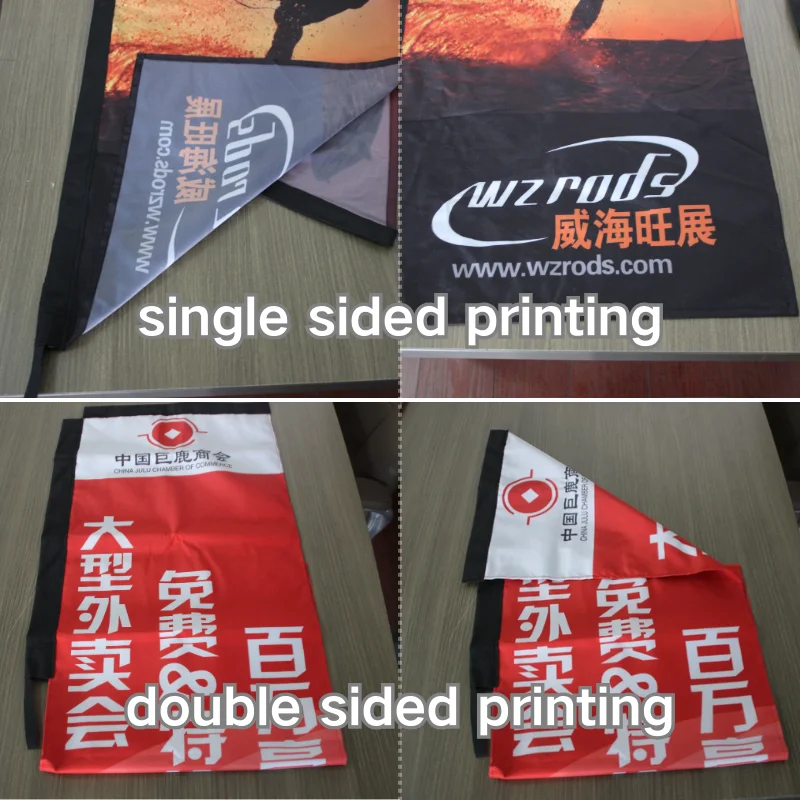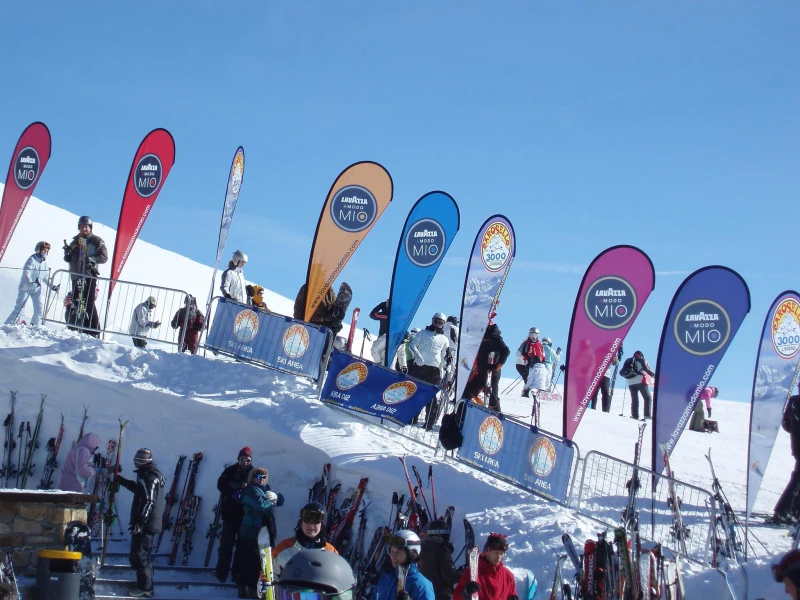
Single-Sided vs Double-Sided Printing: Which Custom Flag Works Best?
Choosing the right printing method affects cost, visibility, and durability. This guide compares single-sided and double-sided custom flags so you can pick the best option for your event or promotion.
What Is Single-Sided Printing?
Single-sided printing means your design is printed on one face of the flag. The reverse side will show a faint mirror image of the artwork because light passes through the fabric. This is a common and cost-effective choice for many outdoor events.

Pros
- Lower cost than double-sided flags
- Lighter and easier to transport
- Better movement in light wind — draws attention
- Excellent for single-direction placement (e.g., storefront, curbside)
Cons
- Reverse side appears mirrored and less legible
- Not ideal for two-way visibility (crowded plazas)
What Is Double-Sided Printing?
Double-sided printing uses two printed panels with an inner backing or a blackout layer so both faces show the intended artwork clearly and independently. This method produces consistent branding from every direction, but it increases cost and weight.

Pros
- Both sides are clear and readable
- Ideal for open-area events with multi-directional traffic
- More professional look for long-term displays
Cons
- Higher cost (material and printing)
- Heavier, slightly more wind resistance
- May require sturdier bases for very windy locations
Cost, Visibility and When to Choose Each
The choice often comes down to budget and placement:
- Choose single-sided if your flag will face one main direction (e.g., beside a road, storefront, booth entrance) or if you need a larger quantity on a tighter budget.
- Choose double-sided for high-traffic open areas, trade shows, festival grounds, or any location where viewers approach from both sides.
Typical price difference: single-sided flags are often 30–40% cheaper than double-sided equivalents, but exact margins vary by size, fabric, and order quantity.
Durability & Weather Performance
Single-sided flags are lighter and can flutter more freely, which is excellent in light winds. Double-sided flags include extra material and often a blackout layer, making them sturdier but also slightly more affected by wind load. For very windy locations, pair heavier flags with proper bases (e.g., ground spike, water base, sand anchor) and consider reinforced poles.
Learn more about base options at our Flag Bases guide.

Typical Use Cases
When Single-Sided Wins
- Retail storefront promotions
- Roadside signage and directional flags
- Large bulk orders for short-term events
When Double-Sided Wins
- Festival grounds and open plazas
- Trade shows with multi-directional foot traffic
- Long-term branded installations
Quick Decision Matrix
If you still can’t decide, use this quick checklist:
- Is your audience coming from both directions? → Yes: Double-sided. No: Single-sided.
- Is budget a major constraint? → Yes: Single-sided.
- Is the flag for long-term use? → Yes: consider Double-sided for best presentation.
Conclusion
There is no one-size-fits-all answer — both single-sided and double-sided printing have clear advantages. Choose single-sided for cost-efficiency and single-direction visibility; choose double-sided for premium presentation and multi-directional exposure. Assess your event layout, budget, and expected lifespan to make the right choice.

Contact WZRODS for tailored advice, or browse our feather flags and custom flag options to compare pricing and materials.



